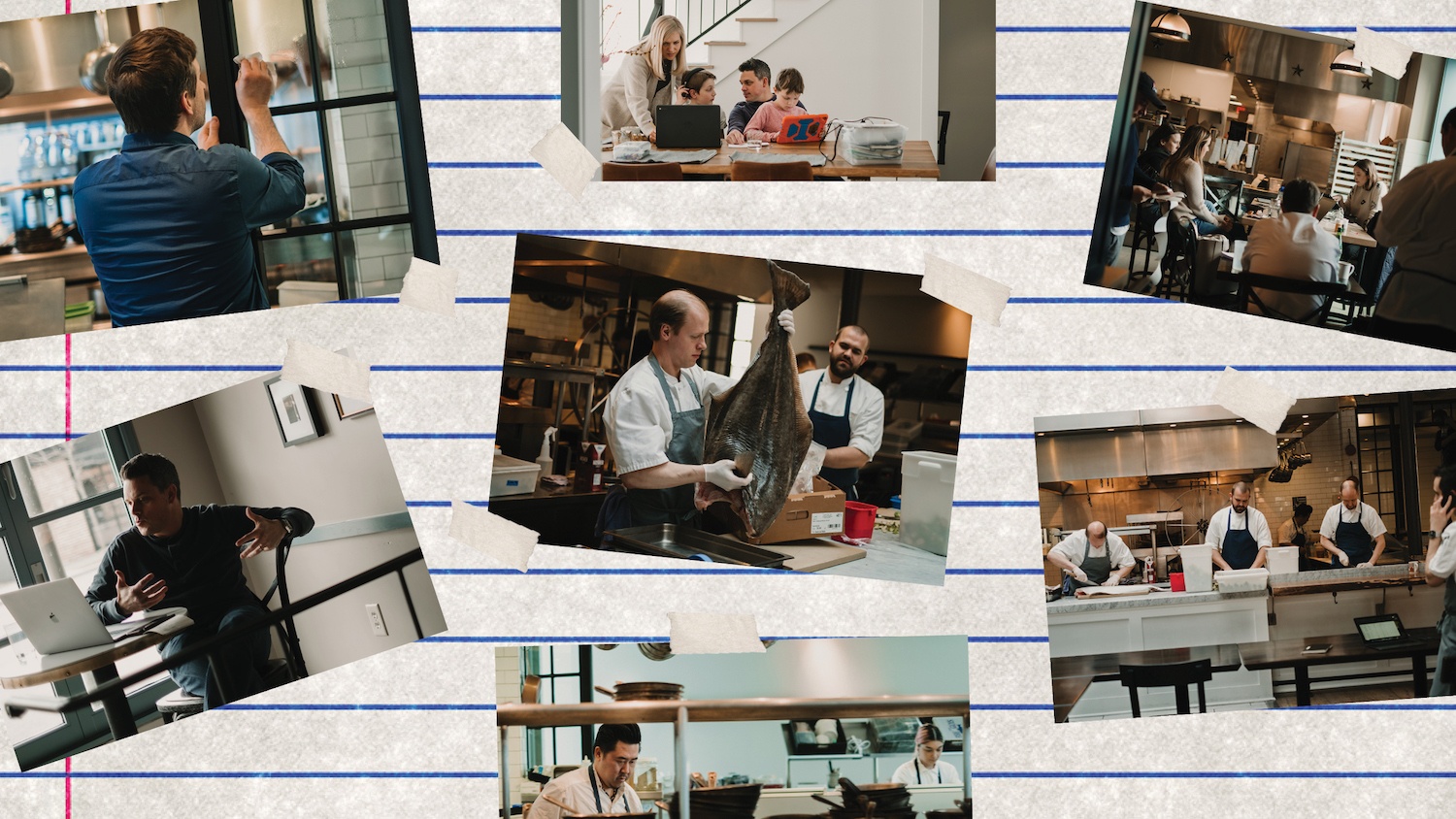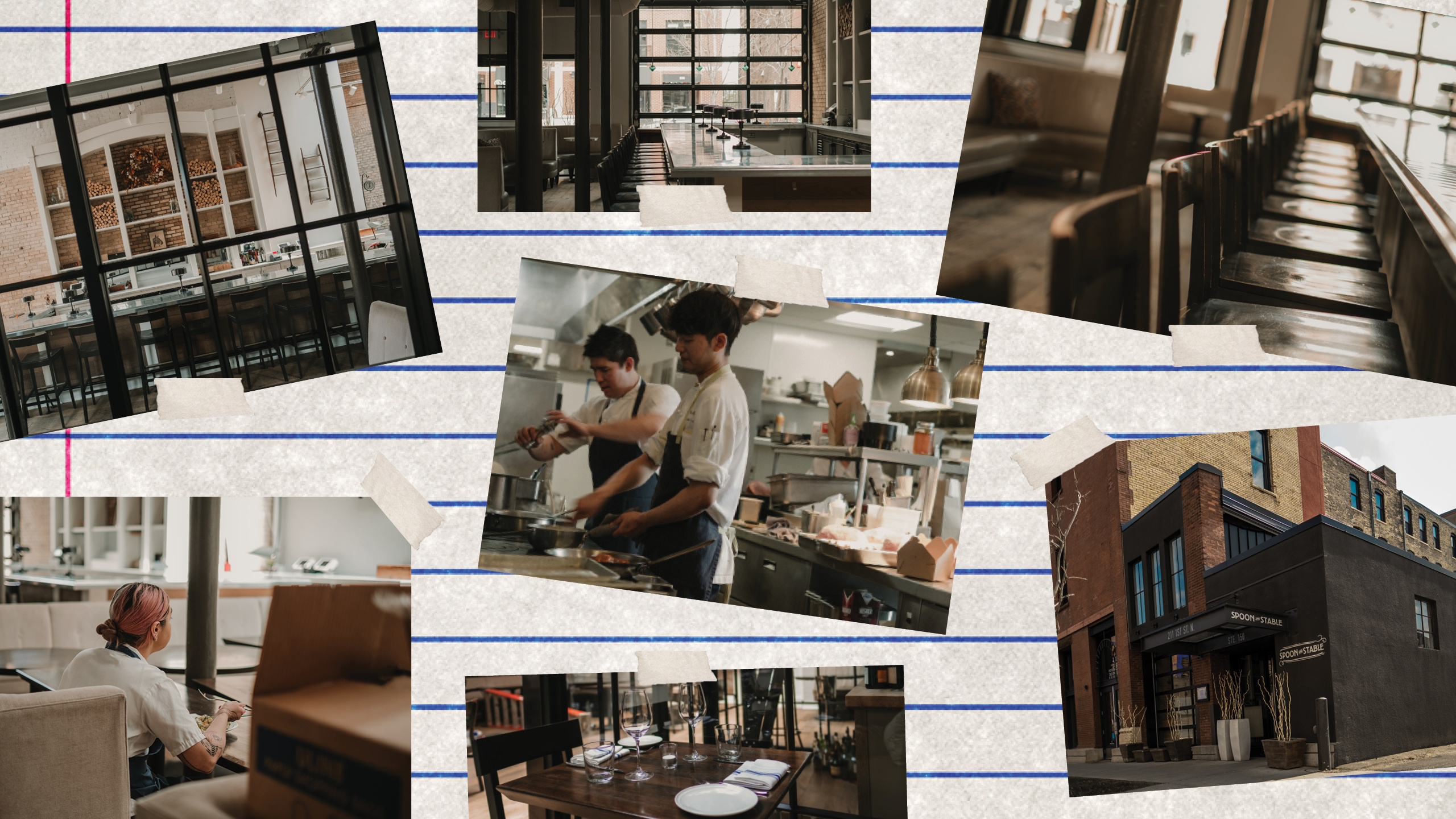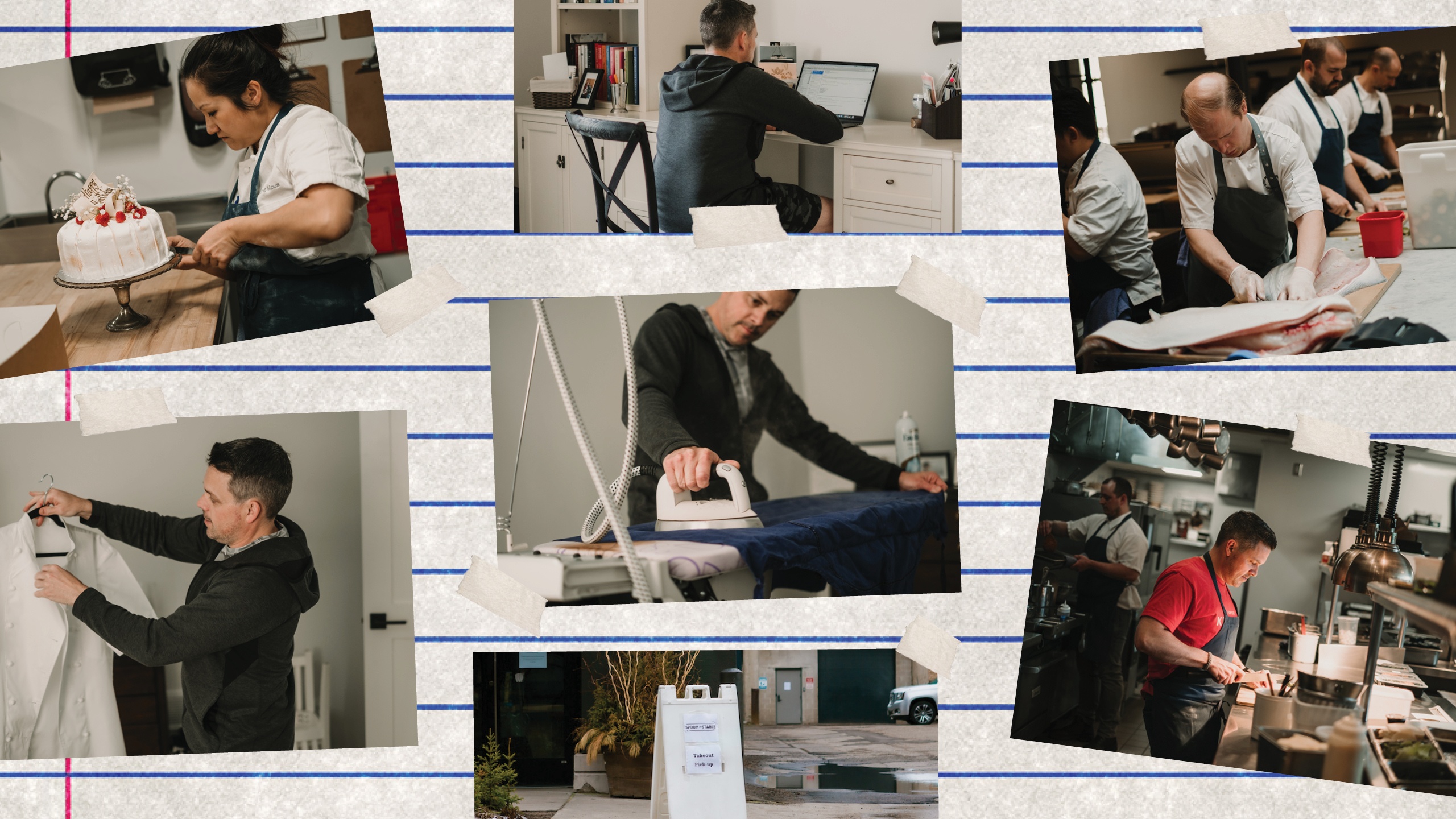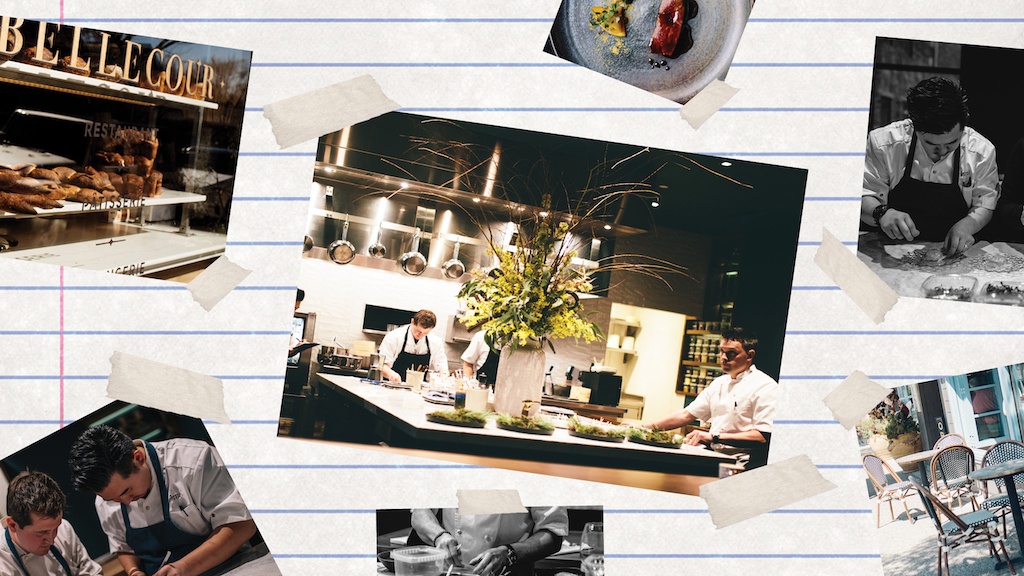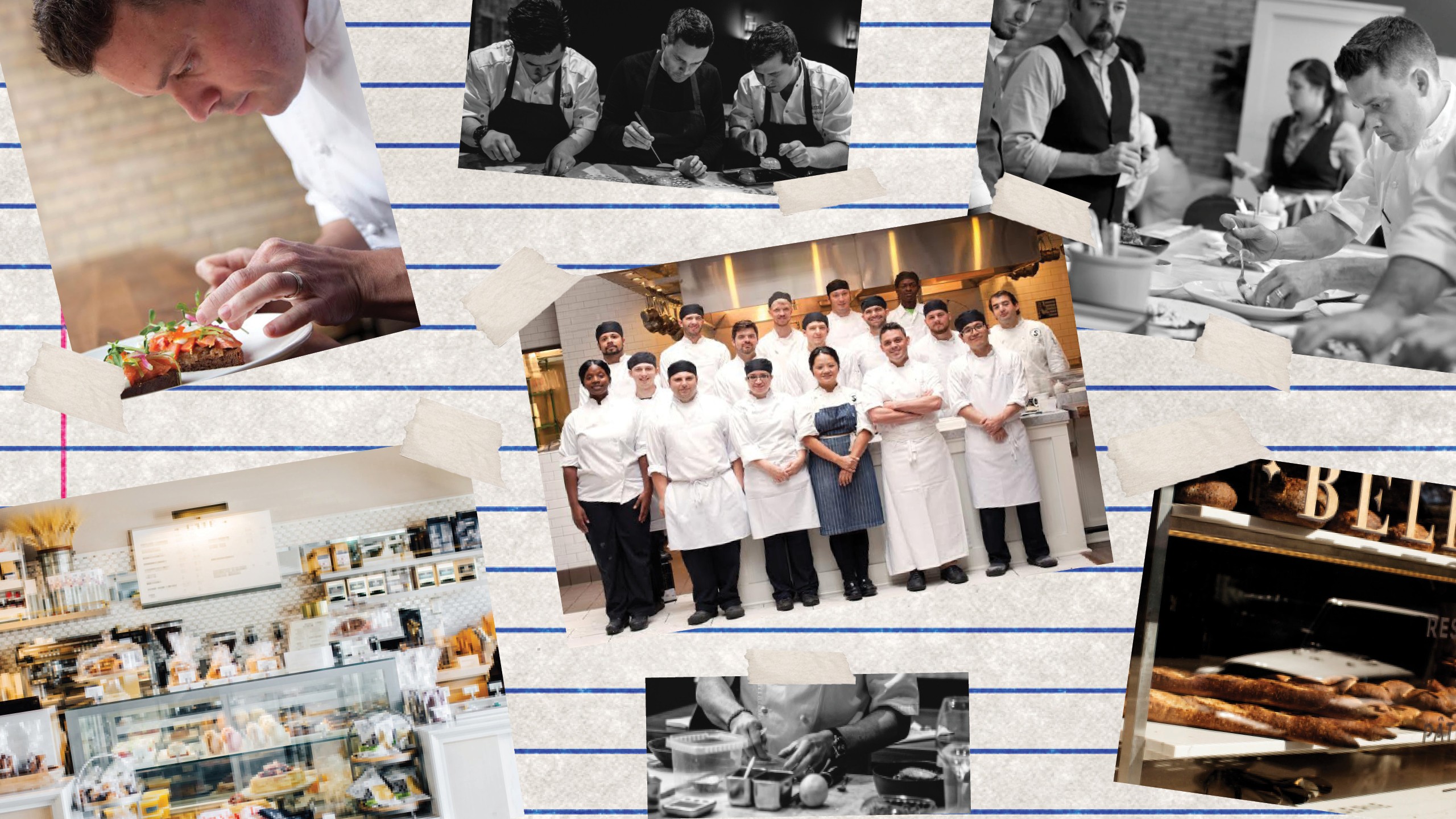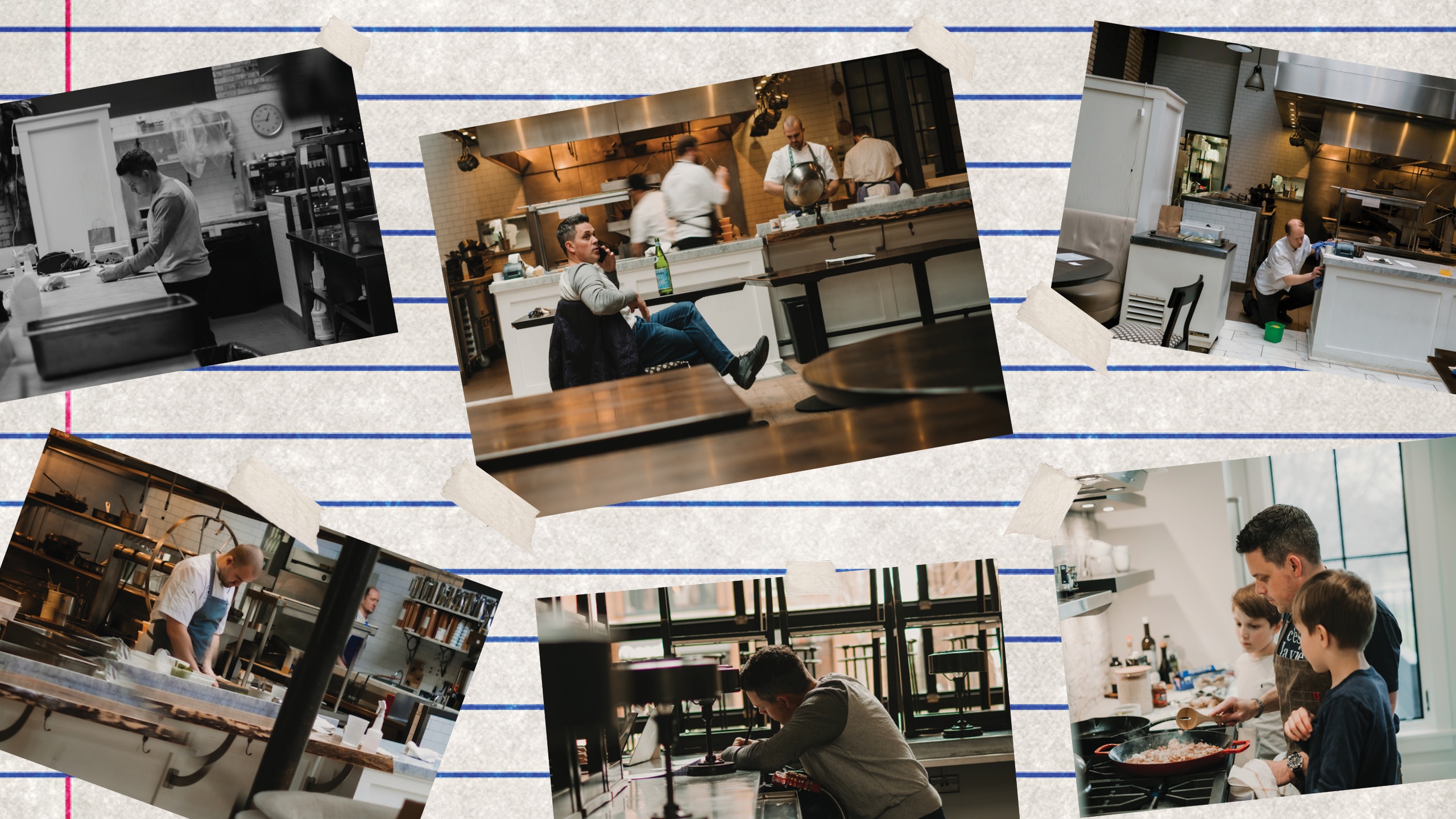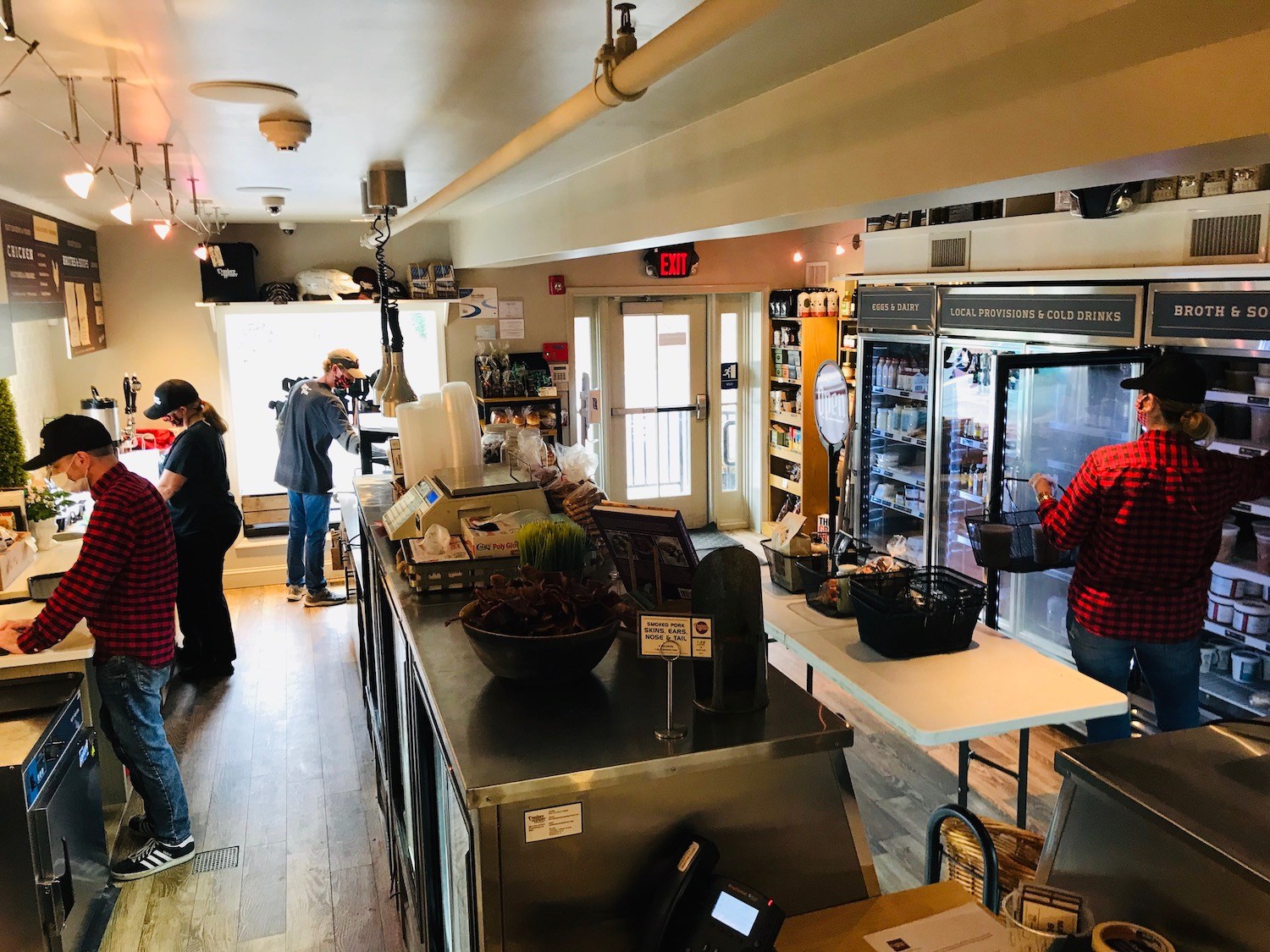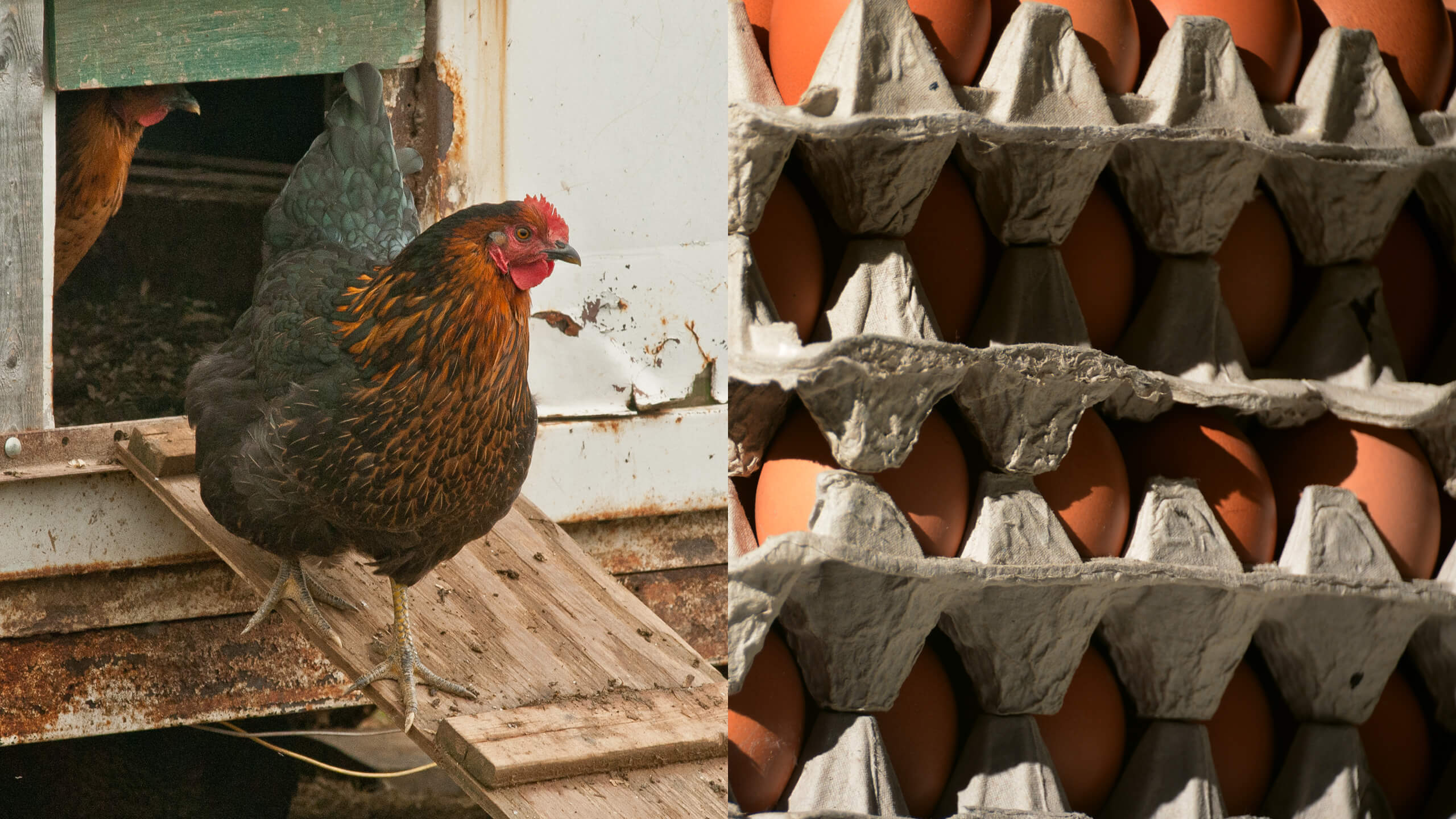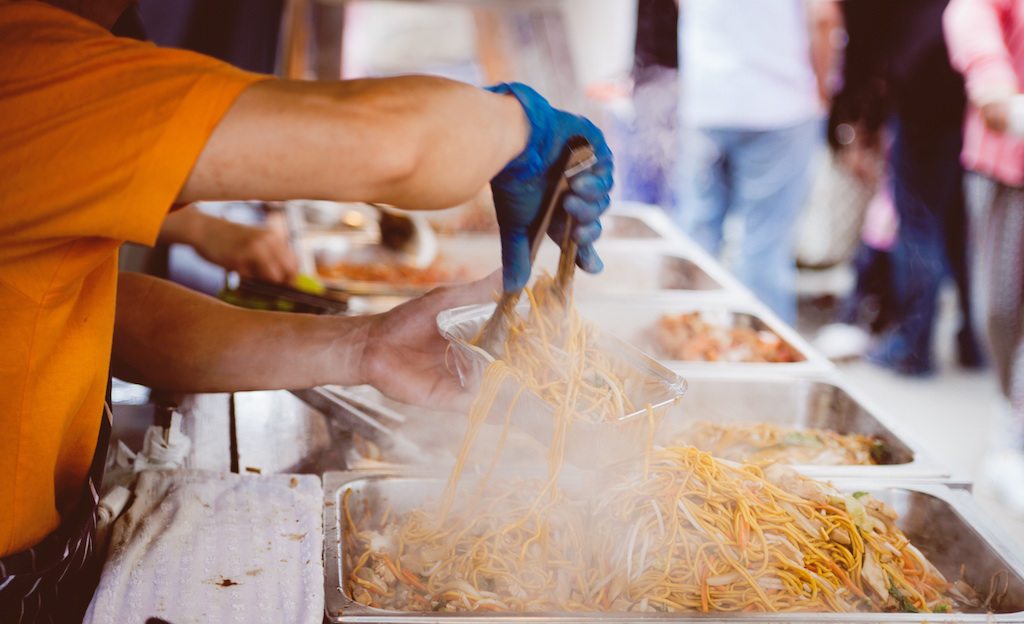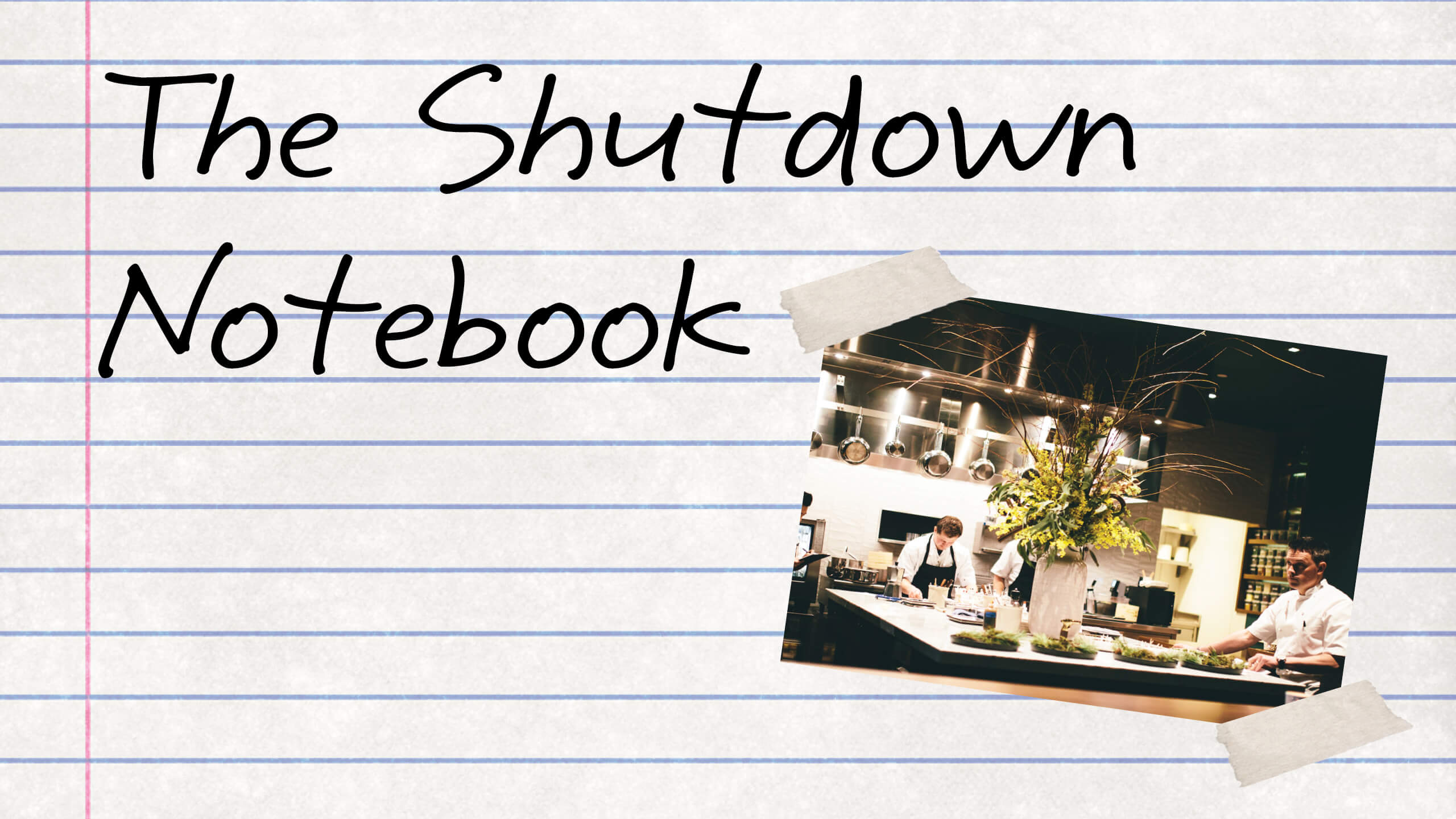
Photo by Libby Anderson/Flickr/Nicolas Raymond/Graphic by Talia Moore
A weekly series about one chef who closed three restaurants during the pandemic—and intends to get them back.
Maybe “re-open” is not the right word.
As in: I can’t wait for my favorite restaurant to re-open so I can eat there again.
Re-open implies that a place that was closed is now open, that yesterday the doors were locked and today they aren’t. But whatever your favorite place is, one thing is for sure: It won’t be the restaurant you remember, despite the same name, the familiar faces behind the bar, in the kitchen, taking your order, even some of the same dishes on the menu. It is likely changed forever, in part because of circumstance, in part because owners have been forced into a months-long hiatus. They’ve had time to think, even if they’re dishing out take-out as they do so.
A restaurant doesn’t exist in a vacuum; it’s the most public link in a food chain that begins with a seed in the ground or a duckling, and ends with customers whose future behaviors, once we’re let out of the house, are a source of endless speculation. Either we’ll hunker down and wait for a vaccine or we’ll storm the bars and bistros, hungry for human contact; most likely both of those reactions and everything in between.
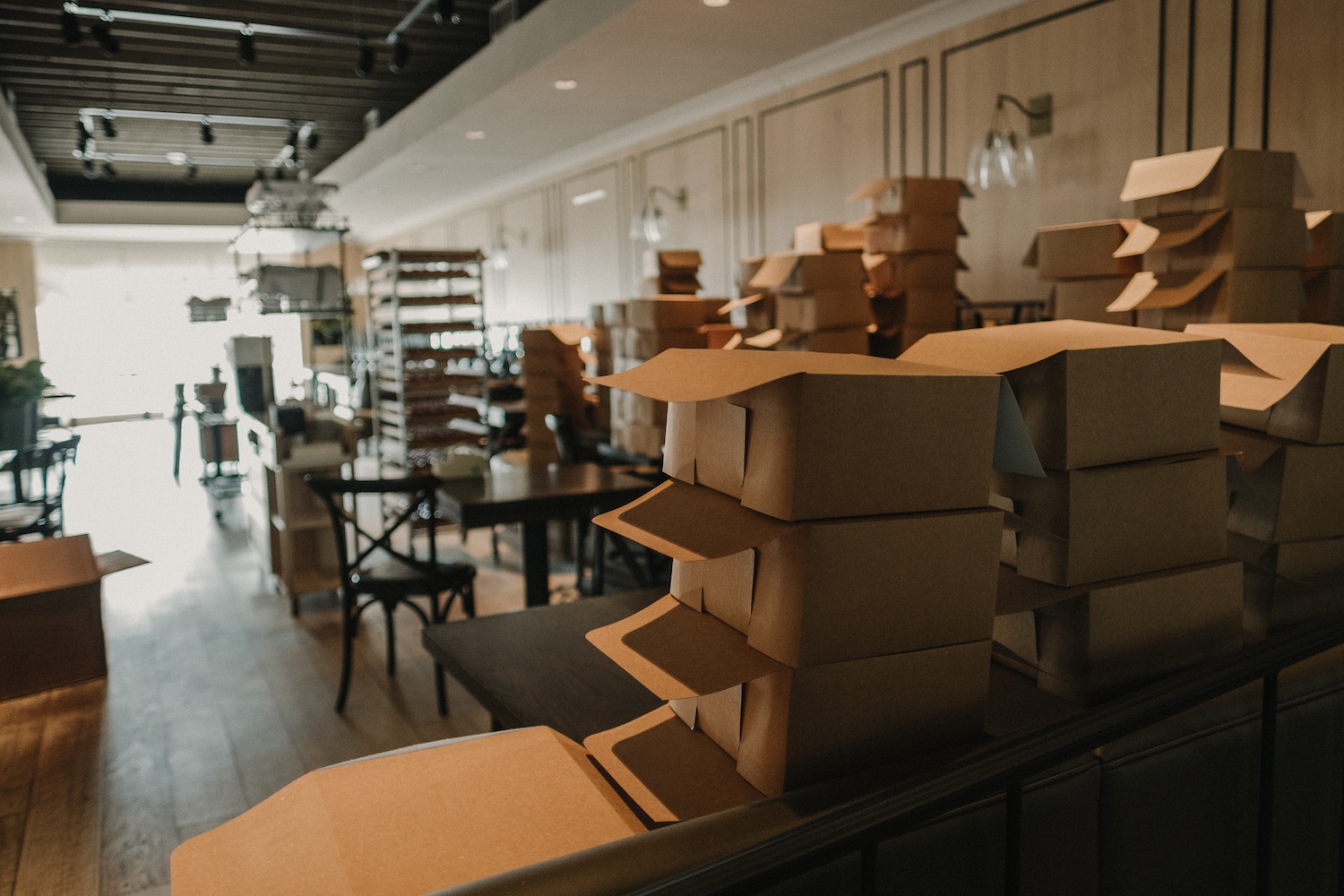
Takeout boxes stacked on Easter Sunday at Gavin Kaysen’s Bellecour restaurant
Dave Puente
Restaurants were at risk even in boom times; in bust times, like these, owners question every aspect of how they do business. Chef and owner Gavin Kaysen has no idea what to expect, because the old indicators of success, a packed house, people three deep at the bar, now feel like creepy outtakes from the film “Contagion”—which began, remember, with a stylish woman shaking hands with a chef in what used to be an aspirational moment, and is now simply terrifying.
The most vulnerable restaurants right now are the independent, owner-operated ones, and two stark numbers convey just how dicey the future is: They comprise 70 percent of the country’s restaurants, and one prediction says that 75 percent of them are never coming back.
The ones left standing, Kaysen believes, will be the ones who reconsider everything, from the number of tables to germ-resistant menus, from menu prices to the eternal salary inequities between front and back of house. They will have to balance the desperate need to dig out of a months’-long hole with patience, because this is not going to be the simple flip of a switch.
—
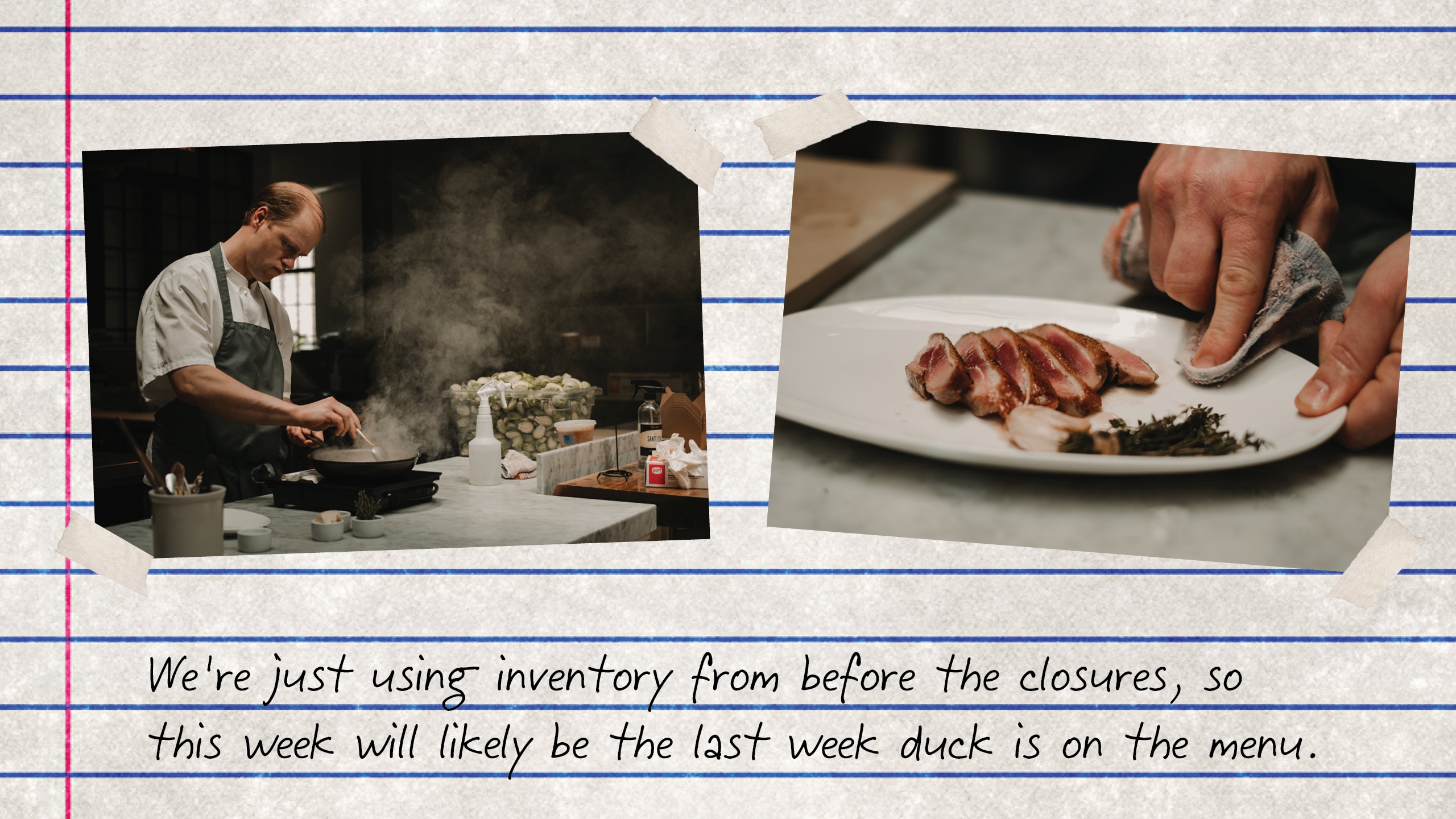
Dave Puente/Nicolas Raymond/Flickr/Graphic by Talia Moore
Supply and demand
We used to go through about 150 ducks a week at Spoon and Stable, about 300 orders. That’s what we’d get from Pat Ebnet, who has a farm outside of Brainard, Minnesota. His duck is particularly good when it’s aged a bit, so we’d dry-age for about 14 days, which obviously meant we’d have to buy ducks for the future, based on a business model we can no longer use. But he was running a business, we were running a business, and we both had to account for that aging time.
We haven’t ordered any for take-out. We’re just using inventory from before the closures, so this week will likely be the last week duck is on the menu. These ducks will have been aged for 12 to 14 days, so that works well. But then we’ll have to change, have to take it off the menu.
What I’m fearful of, once we’re able to get back, is that the light switch to “on” will be a lot slower than the light switch to “off” was. It’s not like I can call up Pat and say I need 150 ducks tomorrow. Everyone’s going to call him.
Before we closed, he was expecting to sell what he usually sold, not only to us but basically to every restaurant in the Twin Cities, but now he has had to freeze some of his inventory. I don’t know how we’ll use that, but we’ll come up with some creative ways to support him. Off the top of my head, can we do duck prosciutto? Use it in a salad, or for the bar menus once we’re open again, or for our ramen specials?
We will help him figure out what that looks like. I feel so for these farmers.
New business
A group of chefs are doing a meal kit, called a provision pack—me, Thomas Keller, Daniel Boulud, Tim Hollingsworth, Corey Chow—for a program called “Small Farms. Big Heart,” one of us starting each Monday. Thomas introduced his with a video on April 6, and mine went up this past Monday. It’s an instructional video, where I make a meal with the ingredients in the box, and the instructions for those dishes are included. Each of us will work with a different cut of lamb—I used a rack of lamb—and different vegetables, and you can order a meal for two or for four. We’re doing it to help promote Keith Martin’s Pure Bred lamb, Farmer Lee Jones and The Chef’s Garden, and Diane St. Clair, who makes butter at Animal Farm in Orwell, Vermont. She has 10 cows, so maybe the first 100 orders will get butter and then we’re out.
My pack includes a rack of lamb, spinach, fingerling potatoes, a beautiful bag of mixed greens, and baby radishes, and it’s $125 for two people, $175 for four, including shipping. I mean, you can order the bigger box, a better deal, and have leftovers. And you’re making a contribution: A portions of the proceeds will go to each of the charities we’ve created to help our team members, in my case, Heart of the House Foundation.
The purpose is to launch an initiative, get people to sign up to support these businesses. My wife, Linda, filmed me at home, and when we were done she said, “Maybe we should sign up,” and I said, let’s do it. We already get CSA stuff from other farmers, but we go through so many vegetables at home, we’ll use it, and it’s a great way to help these farmers out. To keep the supply chain open.
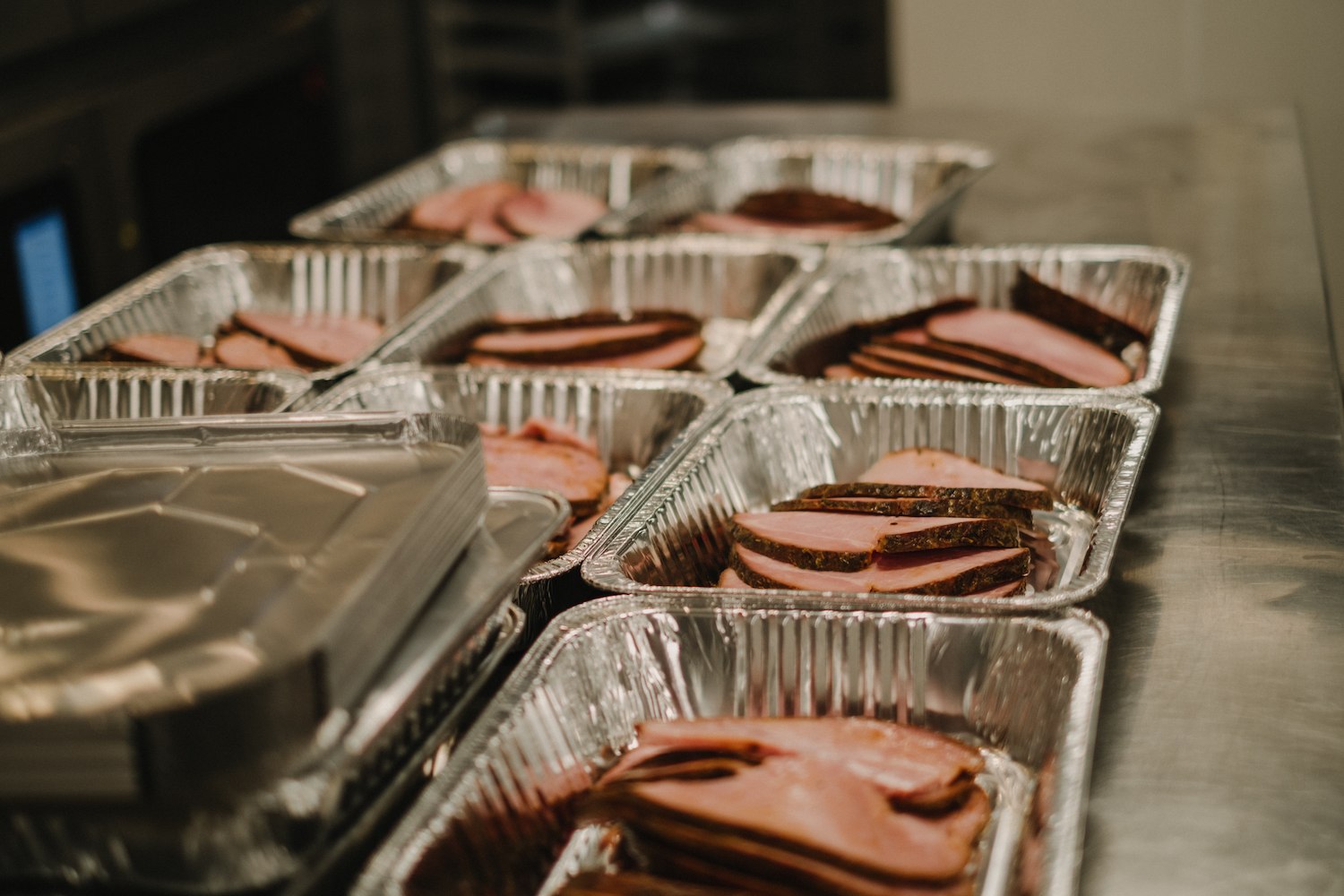
On Sunday, April 12, 2020 Bellecour had 180 orders for takeout.
Dave Puente
And we’ve come up with a new version of takeout at Spoon and Stable, to offer people more choices. Imagine three silos: One, you can purchase a full meal, duck entrée or whatever replaces it, a side of vegetables and a salad—a pre-made, warm TV dinner is basically what it is, just without the tray to eat it on. Another silo is kits of food: If you always wanted to make that fusilli pasta with veal ragu we serve at Spoon and Stable, we’ll have a prepped kit with instructions for you. And the third silo is a full meal for a family of four to six. Right now it features my grandmother’s pot roast and vegetables, in an oven-safe container, so you can go home, heat it up, and have dinner on the table, with salad and dessert. So there’s something if you want take-out, or make-your-own, or pure comfort food. We want to strike that balance.
We did an Easter program at Bellecour, everything from deviled eggs to assorted pastries, a full Easter meal with ham, everything, and we had 180 orders. We were anticipating crazy, so I told the team, this is going to be a time we’re going to have to say no. When we’re sold out we’re sold out. We talked about having the menu we currently have and then adding another, and then decided, no. We’ll have one menu, sell it all, close the doors, that’s it.
—
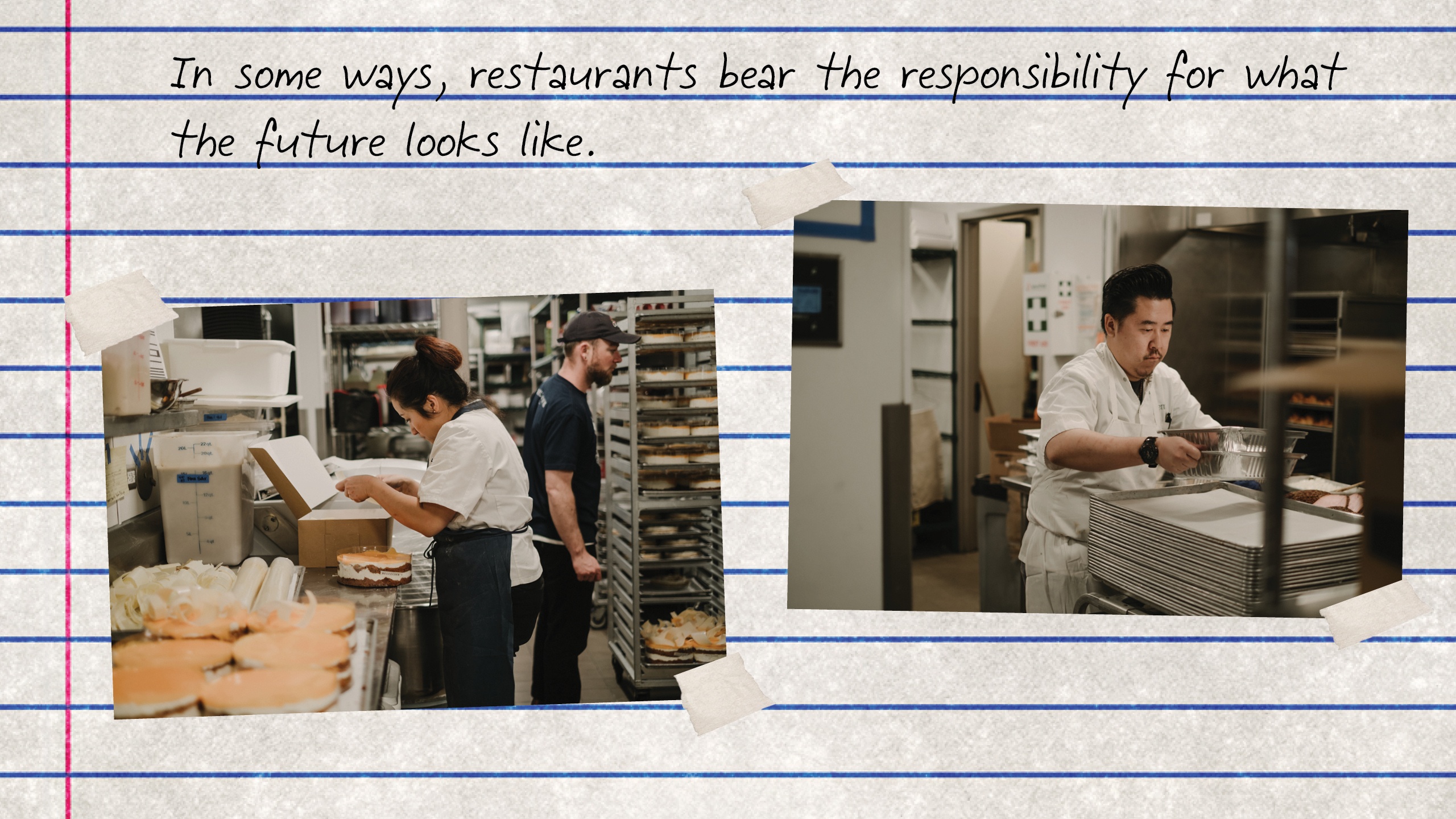
Dave Puente/Nicolas Raymond/Flickr/Graphic by Talia Moore
Social life
In some ways, restaurants bear the responsibility for what the future looks like. There’s a lot to consider in terms of the dining experience: I see chefs on social media saying, I’m just curious, how will you want to go out once this has passed?
Not over, but passed.
The responses range from, “I’m not going out until there’s a vaccine,” to “I can’t wait to get out, see my friends, socialize again.” Once we open our doors, we’re open to a lot of people. We have to be careful, and thoughtful. The idea of just opening the doors and saying we’re ready to go? We’re not going to do that.
The idea of independent restaurants going away, these small businesses—if they do go away and it takes time for them to come back, it’ll change history.
Somebody asked me what I miss the most. I miss the people, seeing them, talking to them, getting updates on their lives. The thing that’s so hard for us to communicate is that we are part of people’s daily lives, whether they come in once a month, twice a day, once every three months, there’s that familiarity. That’s what I want back. I tell my team, just go watch “Cheers”: You want this to be the place where everybody knows your name.
That’s the part we’ve lost.
The idea of independent restaurants going away, these small businesses—if they do go away and it takes time for them to come back, it’ll change history. The 92nd Street Y in New York City did a zoom broadcast, Chef Kwame Onwuachi from Kith and Kin in Washington, D.C. and Chef Massimo Bottura, hosted by Jeff Gordinier from Esquire, and Chef Kwame said something so important: “If kitchens are the heartbeat of the home, restaurants are the heartbeat of the nation,” which is a great way to look at this. I cannot imagine our universe without these restaurants.
—
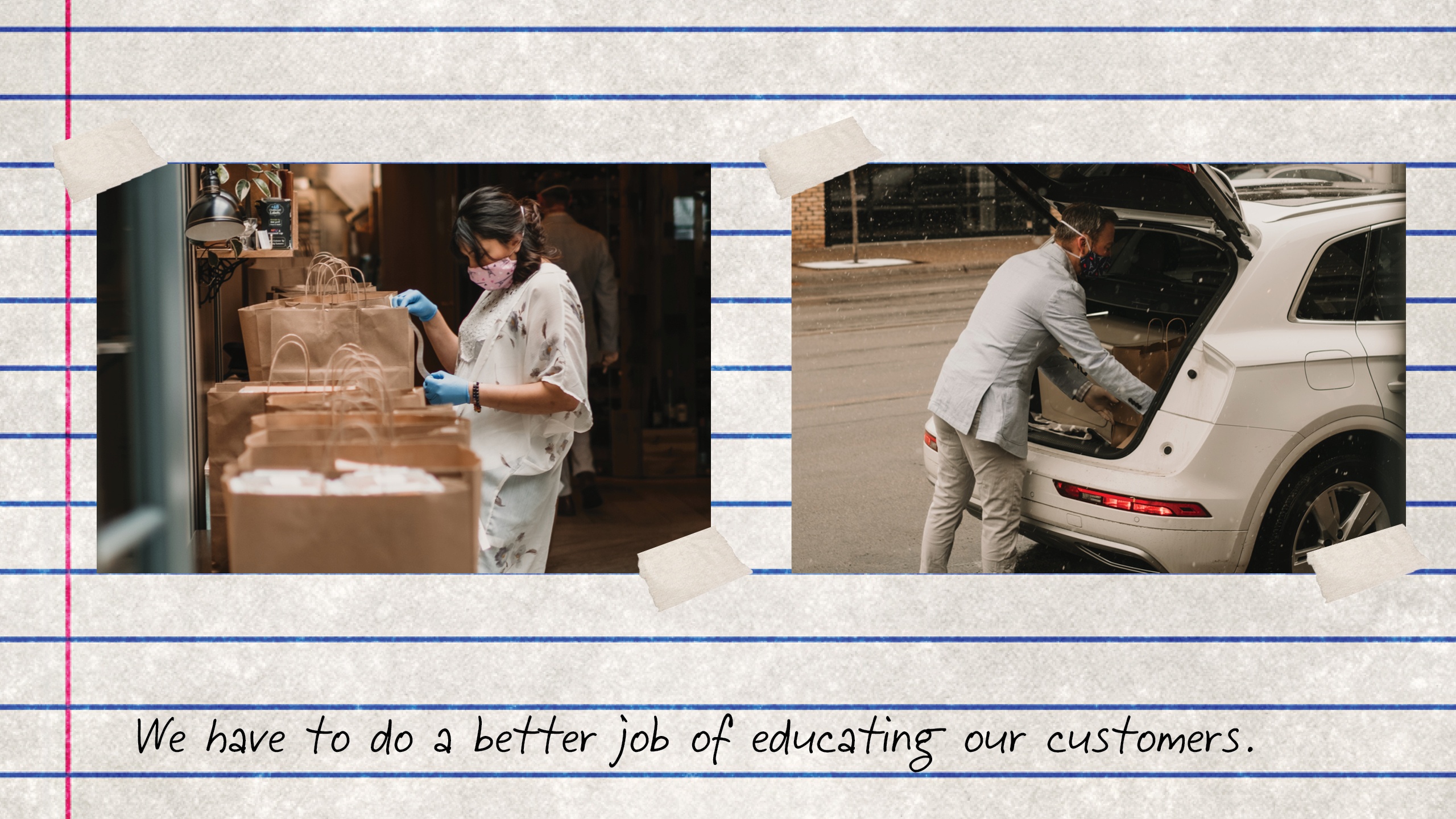
Dave Puente/Nicolas Raymond/Flickr/Graphic by Talia Moore
Realignment
Menus are going to look different in the beginning: They’re going to be more abbreviated, smaller, while the supply chain gets back on its feet. And the menus themselves may change. We’re sort of in the right mix already, because at Bellecour the menus are covered with a vinyl covering, so it’s easy, we can sanitize them after each use. So either we move to vinyl coverings for the menus at all the restaurants, like you see in little bistros or coffee shops, or we use tablets. I might prefer vinyl to tablets, only because I’m kind of an old soul in terms of the restaurant experience.
I’ve started to see people getting frustrated by the acts of other people. If there are clear markings on the sidewalk to say “keep your distance,” and someone doesn’t, there’s an issue there. And more people wear masks and want others to wear masks, so we’ve ordered masks for all our team from Hedley & Bennett, which usually makes aprons and other kitchen wear. They’re making tons of masks so we ordered 40 or 50. We’ll wear those.
About two weeks ago, we all got a Minnesota Department of Health email with guidelines: ‘If you’re doing take-out here are the rules you have to follow.’ Really proactive, so everybody’s on the same page. But I look back—it seems eons ago—when this started, and there were all these restaurants posting images and letters saying we’re staying healthy, we’re washing our hands, we’re wiping down tables. We never posted, because I thought: we always do this. Always. So why would I say we’re doing it now?
We have to get better at explaining razor-thin, because when people walk in and there are 200 people at Spoon and Stable, or a line down the block at Bellecour bakery, they don’t understand that my margins are razor-thin.
And we have to do a better job of educating our customers. I’ve been reading people’s tweets—don’t ask me why I read all this shit now—and somebody made the comment, “I keep reading that restaurant margins are razor-thin and I feel guilt about not going out to eat.” And a lightbulb went off in my head. We have to get better at explaining razor-thin, because when people walk in and there are 200 people at Spoon and Stable, or a line down the block at Bellecour bakery, they don’t understand that my margins are razor-thin. And my rent is nothing like New York City’s, but that doesn’t take away from how hard we have to work to make those margins.
Beyond that, we are trying to understand how this changes our business model—and how it will change the customer’s understanding. Will customers come in and tip more? Maybe. But what good does that do for the people in the back of house, the pastry cook, the line cook, the receiver? How do we give them a bit of equality, a bit of a voice? I don’t have the answers yet, but there has to be a way for us to explain to people the importance of whatever changes we make.
—
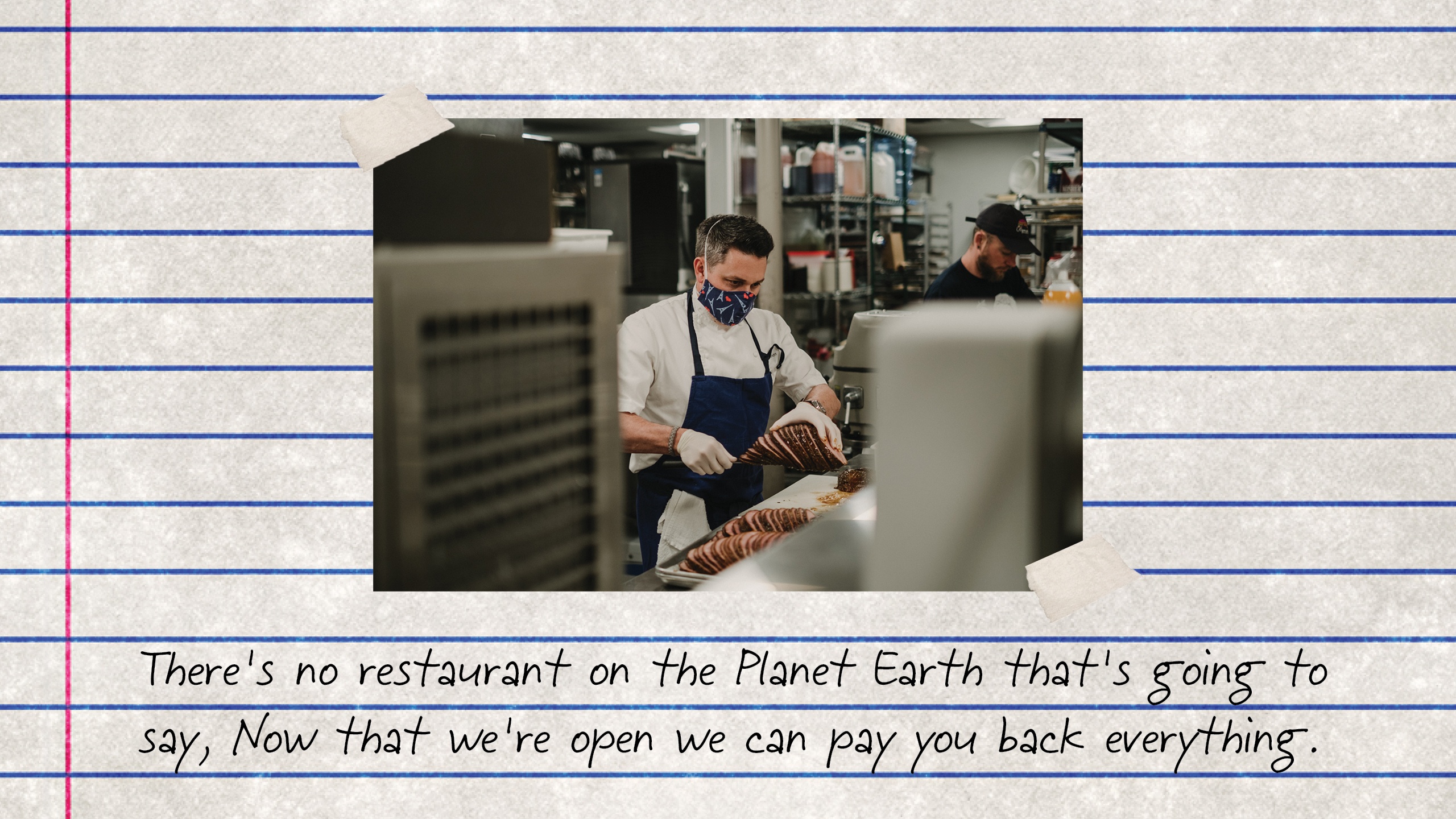
Dave Puente/Nicolas Raymond/Flickr/Graphic by Talia Moore
Cutbacks and helping hands
I make zero salary. I cut myself to zero a long time ago, and I’ll do it as long as I need to. The strength of the business is what we need to see before there’s any adjustment in that.
And early on we sent out an email to the management team that said, Come to me privately to tell me what kind of adjustment you’re able to make at this time. You tell me the percentage cut you can tolerate; I’m not going to do that for you, because everyone makes a different amount and has different responsibilities. It gives me an understanding of where they are—and if someone can’t take a bigger salary cut then maybe they help in other ways, jump to one of the other restaurants if they’re free. At Easter, the majority of staff was at Bellecour.
Andrew Zimmern and I created KZ Provisioning three years ago to cook for players and executives from the Minnesota Wild hockey team, and this year we picked up the Timberwolves basketball team, breakfast, lunch and dinner, game days different from practice days. Each practice facility built a kitchen for us, but there’s no hockey now. A handful of the basketball guys are still in town, so we build meal kits for them. But before we had 12 employees. Now we have one.
At the time they thought, June 30, that’s plenty of time, but the reality is, if you can’t go back you can’t go back.
We’ve been approved for the four loans we applied for—one for Bellecour, one for Spoon and Stable, one for Demi, and one for the company, for Soigné Hospitality, but not for the sports company, it didn’t make sense.
The payroll protection plan is not very sufficient, though. It’s a reactive move. The plan is, you have to hire your staff back by June 30 if you want the loan to be forgive-able. Of course that’s debatable, because if the country can’t go back until September, Congress will have to look at the deadline again. But that’s why we didn’t apply for the sports company; if the teams don’t come back this season I can’t hire my people back.
At the time they thought, June 30, that’s plenty of time, but the reality is, if you can’t go back you can’t go back.
And what if I don’t hire everyone back? Let’s say Bellecour has 100 employees, just to make the math easy, but I only hire back 70 because we had to remove half our tables. Then we would be forced to pay the loan back, with 1 percent interest, over two years. It was going to be .5 percent interest over 10 years, but they changed it, which is unfortunate.
I told our director of accounting, let’s make sure we are so buttoned up on what we’re getting into with these loans. We’ll see when the money comes into our accounts, and then I’m just going to wait. I’m not going to spend any of it until I understand what’s going on.
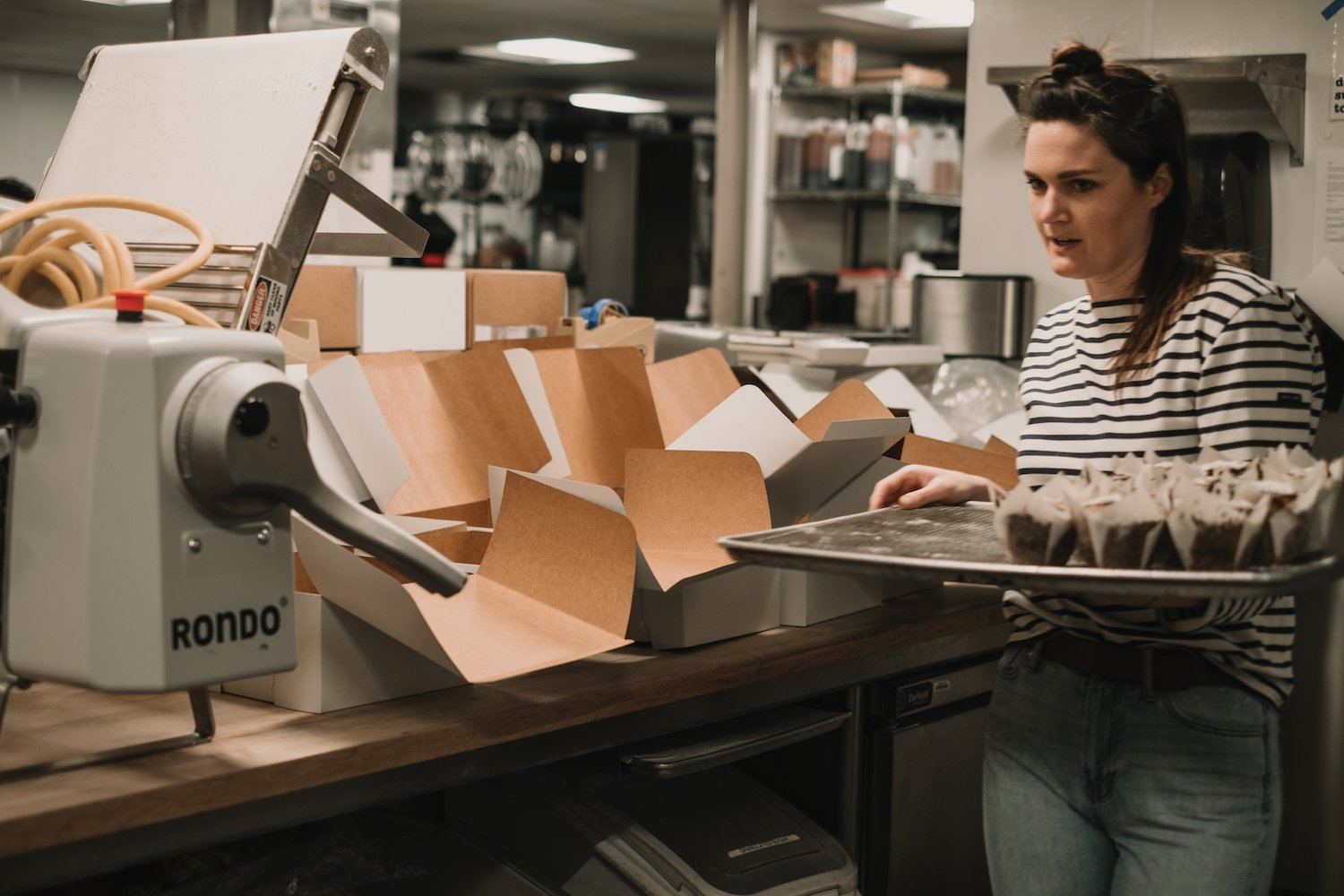
The payroll protection plan says you have to hire your staff back by June 30 if you want the loan to be forgive-able.
Dave Puente
We’re still dealing with rent and health insurance and sales tax again this month. The landlords deferred April and should defer May, defer until we open and then amortize it out starting in 2021, over the length of the year. My game plan is to see what the governor says about our stay-in-place order so I have a little more of a timeline. If we can’t open until June 1, I need a deferment in May. There’s no restaurant on the Planet Earth that’s going to say, Now that we’re open we can pay you back everything.
I have to decide on health insurance in the next week. My gut tells me I’m going to pay it until June anyway.
And I emailed the governor again about sales tax. I got March deferred a month, to April—but do we have to pay both March and April in April, or is there a deferment there? We owe it, but can we owe it three months after we open again, or amortize it, or is there an opportunity, if you get a small business loan, to go ahead and pay it?
People I don’t necessarily know are reaching out to say what do we do about April? I said to a policy aide in the governor’s office, It’d be great if you put out a pro-active message so we know what to expect, so we’re not in that social media back-and-forth.
And in the midst of all this, pull back for a second. Think about how frivolous the notion of promoting a chef or restaurant once was, and how crazy people used to get about that, about the whole notion of the celebrity chef. But now those chefs, Tom Colicchio and others, are the ones standing on the Hill fighting for that 70 percent of restaurants that are owner-operated, independents, those countless people. Tom, Danny Meyer, so many others—so a good thing came out of what was a craze.
